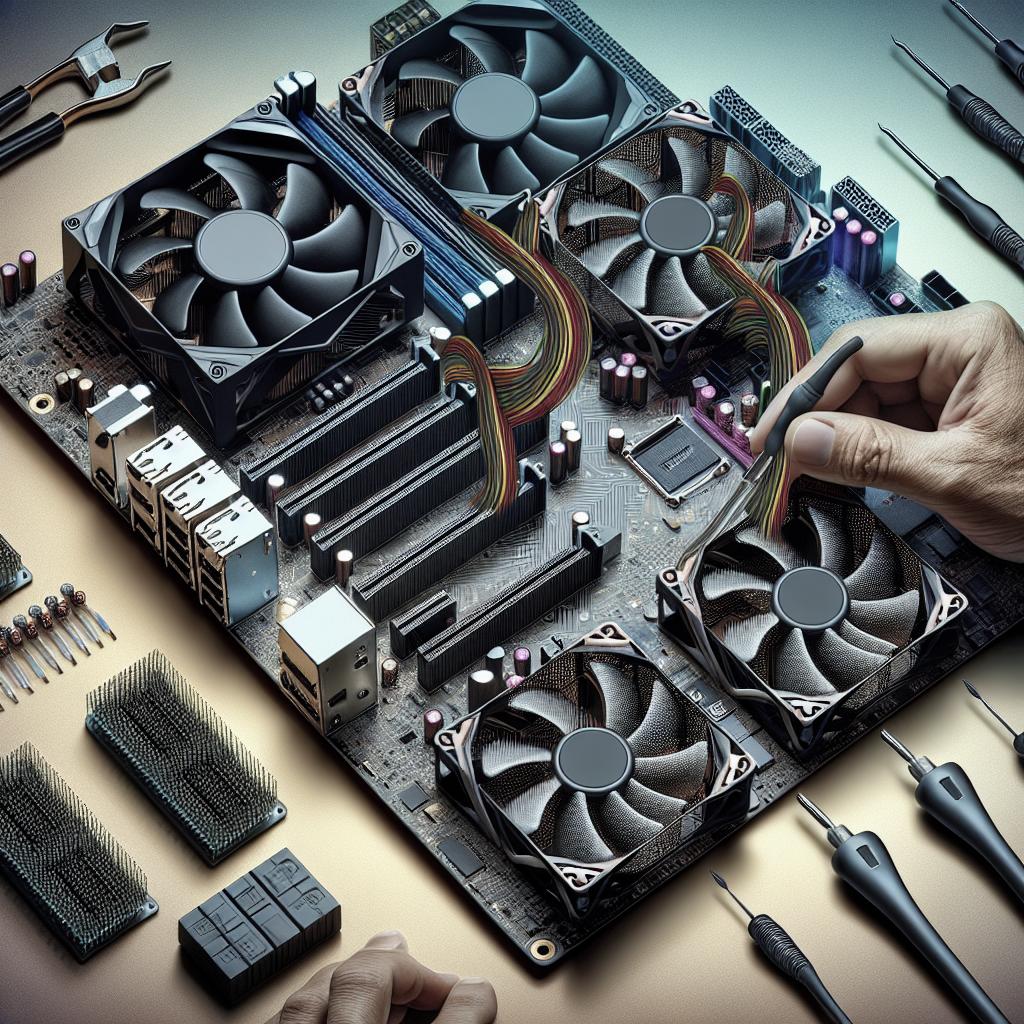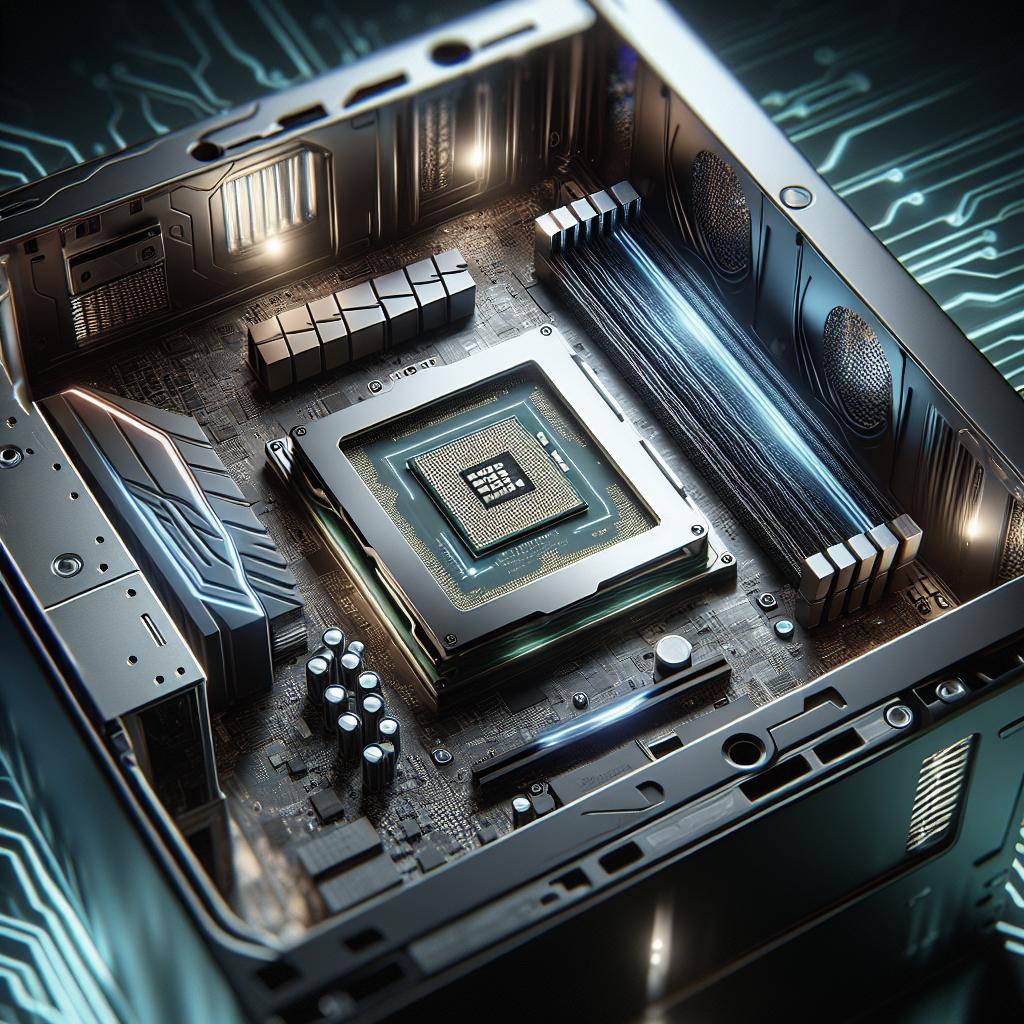“`html
How to Connect Fans to a Motherboard
Assembling a PC can be a rewarding experience, but it’s important to ensure effective cooling. One crucial component of this process is connecting fans to the motherboard. This blog post will guide you through understanding motherboard fan connectors, their operation, and how to properly connect fans to optimize your system’s cooling efficiency. We’ll also touch on how many fan connectors are typically available on a motherboard and discuss compatibility between 3-pin and 4-pin fans. By the end, you’ll possess the knowledge to effectively manage your PC’s airflow setup, ensuring all components remain at optimal temperatures for peak performance and longevity.
What Is a Motherboard Fan Connector?
A motherboard fan connector is an integral part of your PC’s cooling system. It’s a small but vital interface found on the motherboard, designed to connect cooling fans directly to your system. These connectors allow the motherboard to supply power to the fans, enabling them to dissipate heat effectively from critical components such as the CPU and GPU.
Motherboard fan connectors typically come in two main varieties: 3-pin and 4-pin headers. The former provides basic fan functionality with power, ground, and a signal to control fan speed, while the latter includes an additional pin for precise speed control using Pulse Width Modulation (PWM). Understanding these differences is key to ensuring your fans are connected correctly, providing efficient and quiet operation that will keep your PC running smoothly.
How Does a Motherboard Fan Connector Work?
The basic mechanics behind a motherboard fan connector involve supplying power to the fan and providing speed regulation, which are essential for effective cooling. A 3-pin connector consists of a power pin, a ground pin, and a signal pin. The signal pin feeds back the fan’s speed to the motherboard, enabling it to adjust settings to maintain the desired temperature.
A 4-pin connector adds an additional dimension—it contains Pulse Width Modulation (PWM) control, allowing the motherboard to send signals that regulate fan speed more precisely. This means that the fan can operate at varying intensities depending on the system’s thermal needs, ensuring efficient energy usage and cooling. Such finetuned control can significantly enhance the lifespan of your components by maintaining stable temperatures and reducing noise.
How Do I Connect Fans to My Motherboard?
Connecting fans to your motherboard is simpler than it may seem. Start by identifying the fan connectors on your motherboard—usually located near the CPU socket or close to the edge of the board. Refer to your motherboard’s manual for exact locations and instructions, as they can provide valuable guidance specific to your model.
Once located, carefully align the fan connector with the appropriate header, ensuring that the ground and power pins match properly. For 3-pin fans, you will connect them to either 3-pin or 4-pin headers, with the fan settings being adjusted via voltage control instead of PWM. When installing 4-pin fans, ensure they are plugged into a PWM-controlled header for optimal functionality.
How Many Fan Connectors Does a Motherboard Have?
Motherboards vary in the number of fan connectors they have, often depending on their size and intended use. Entry-level motherboards might have fewer connectors, typically around two to three, which should be sufficient for basic cooling. These connectors are strategically placed to accommodate essential airflow for crucial components.
High-end motherboards cater to more demanding configurations and can offer up to six or more fan headers. This provides greater flexibility for enthusiasts looking to implement complex cooling solutions, including multiple case fans and additional cooling for high-performance CPUs and GPUs. It’s essential to assess your cooling needs and select a motherboard with an adequate number of connectors to support your configuration.
Can I Plug a 3-Pin Fan Into a 4-Pin?
Yes, a 3-pin fan can be connected to a 4-pin connector, and it will operate correctly. In this configuration, the fan will rely on voltage control rather than PWM to adjust speed. The 4-pin header can accommodate this setup by simply forgoing the use of the fourth PWM pin for speed regulation.
It’s important to note that connecting a 3-pin fan to a 4-pin header may limit its ability to precisely control speed, as the motherboard will not be able to utilize the PWM feature. Despite this, the fan will still function as expected and can adequately cool your system, making it a versatile solution for mixed setups.
Final Thoughts
Understanding how to connect fans to your motherboard is crucial for maintaining optimal temperatures and ensuring system stability. With the right knowledge, you can set up a cooling system that effectively dissipates heat from critical components, enhancing both performance and longevity. Remember to assess your motherboard’s capabilities and match them with your cooling needs to create an efficient, quiet, and reliable PC. Whether you’re a beginner or an advanced user, this guide offers valuable insights to streamline your build process and ensure your machine stays cool under pressure.
| Topic | Details |
|---|---|
| What Is a Motherboard Fan Connector? | Interface on the motherboard for connecting fans to provide cooling by supplying power and controlling speed. |
| How Does a Motherboard Fan Connector Work? | Supplies power to fans with speed regulation through 3-pin (voltage) or 4-pin (PWM control) configurations. |
| How Do I Connect Fans to My Motherboard? | Locate fan headers, align connections correctly, and plug in 3-pin fans to either 3-pin or 4-pin headers, and 4-pin fans to PWM-controlled headers. |
| How Many Fan Connectors Does a Motherboard Have? | Varies by motherboard; could range from 2-3 on entry-level boards to 6+ on high-end boards, depending on cooling needs. |
| Can I Plug a 3-Pin Fan Into a 4-Pin? | Yes, 3-pin fans can be used on 4-pin headers, but they will not use the PWM feature and rely on voltage control for speed. |
“`


